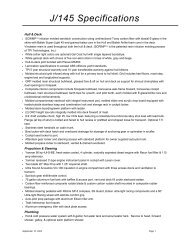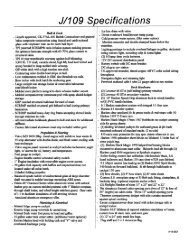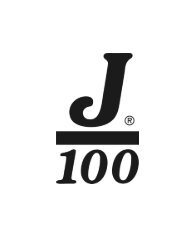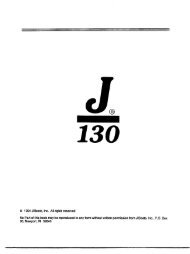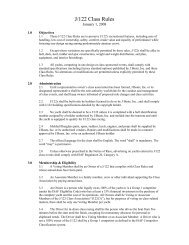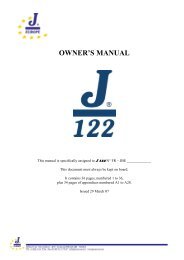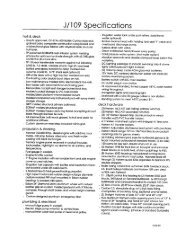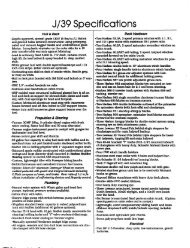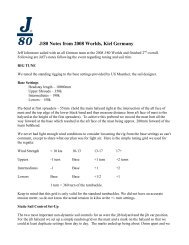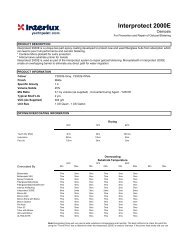J105 Owner Manual 2012.pdf - J/Owners
J105 Owner Manual 2012.pdf - J/Owners
J105 Owner Manual 2012.pdf - J/Owners
You also want an ePaper? Increase the reach of your titles
YUMPU automatically turns print PDFs into web optimized ePapers that Google loves.
J/105 <strong>Owner</strong> Guide ...................................................................................................................................................................................................................................................... 26 <br />
Engine System <br />
The engine and fuel system is engineered to be conveniently accessible for repairs and general <br />
maintenance. Located behind the companionway ladder, there is access on the aft sides (through <br />
the cockpit lockers) and in front of the engine from which important functions can be reached; <br />
including water strainer, fuel injectors, fuel filter, fuel primer, expansion chamber, and <br />
alternator. <br />
Before starting the engine read the engine manufacturer's owner's manual for proper break-‐in <br />
and operating procedures. Once the engine is running, inspect it for any discrepancies, like oil <br />
leaking, excessive water leaks, or anything out of the ordinary. <br />
Drive Train <br />
• Engine Control Panel -‐ is mounted in the cockpit. It contains the starter, stop button, <br />
warning lights, and gauges. The combination throttle/gearshift is mounted on the <br />
cockpit wall. Double-‐check all mechanical connections between engine and on-‐deck <br />
equipment. <br />
• Engine Bed -‐ is constructed of highly reinforced fiberglass. This provides a superior <br />
mount over wood and is also rot-‐proof. The engine sits on heavy duty rubber shock <br />
mounts to help isolate the engine vibration from the boat. Check to see that the engine is <br />
sitting correctly on them and the bolts tightly secured. <br />
• Neutral Safety Switch -‐ the J/105 is equipped with a neutral safety switch and the engine <br />
will not start without the throttle control in a proper neutral or advanced neutral <br />
position. <br />
This is the complete system that propels your boat. It includes the following components: <br />
coupling, stuffing box, shaft log, shaft, strut, and the propeller. <br />
• Transmission -‐ is attached to the aft end of the engine and houses the reduction and <br />
reverse gears. These gears generally need little maintenance, but the oil level should be <br />
checked periodically. <br />
• Stuffing Box -‐ is aft of the engine where the propeller shaft passes through the hull. It is a <br />
waterproof housing consisting of a rubber "jacket" attached to the tube and a brass <br />
bearing with hose clamps. When the engine is running, check to see that intermittent <br />
drips of water appear where the shaft enters the stuffing box. If the drips are a <br />
continuous stream, i.e. more than one every ten seconds, you must tighten the <br />
compression nut on the forward end of the stuffing box. This requires two large pipe <br />
wrenches to tighten the forward nut over the aft "core nut." It should not get hot when <br />
running. <br />
• Propeller -‐ is a MARTEC folding prop of high quality bronze alloy. Check to see that the <br />
blades on the prop open almost perpendicular to the shaft. The prop is simple to care for <br />
and can withstand years of hard use. However, there are a few easy precautions which <br />
can prolong its life:



